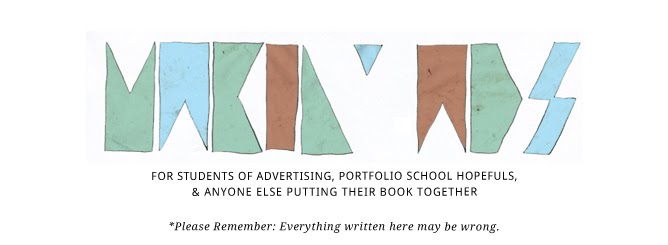This is a guest post from AKQA creative and frequent Makin' Ads contributor Nathan Archambault.
Julian Edelman, diminutive wide receiver for the New England Patriots, would have made a fantastic advertising creative.
Seem random? Not at all. Not when you understand his approach to making it in a highly competitive industry.
After playing quarterback at Kent State (not exactly a football powerhouse), Edelman was drafted by the Patriots in the 7th and final round of 2009. The odds were against him having a successful career in the NFL but as of today he’s 6th in the league in receptions, just ahead of a superhuman they call Megatron.
Here’s the approach Edelman took that separated him from everyone else:
“The more you can do, the more valuable you make yourself to a team. Sometimes, lying and saying you’ve done it when you really haven’t done it. Put my head down, worked my tail off, watched a lot of great guys ahead of me over the years … You watch Tom Brady and learn how to be a professional. You’re around that, and it becomes your life … Punt-returning, kick-returning, playing defense, whatever the coaches ask you to do. Blocking a kick. When you’re younger and you’re a seventh-round draft pick, a rookie, you basically do everything you can. You could be a camp body … Everyone’s fighting for a job. Any time a coach needed a guy up, you had to go sprint up there and try to deal with it … You saw a lot of guys, Wes Welker in the huddle, Joey Galloway, Randy Moss, even though they’re different body types, they’re such smart receivers. You could always take something away from everyone. When you’re green, you grow; when you’re ripe, you rot. You gotta constantly learn. My father tells me that all the time. We’d be practicing out in the backyard, and if I had a bad attitude or I was talking back or something, he’d go, You think you have all the answers. When you’re green you grow, when you think you’re ripe you’re gonna rot.“
Now replace Tom Brady with your creative director’s name. Replace football responsibilities with advertising projects. Replace Moss and Galloway with your favorite senior creatives.
If you’re a junior trying to make it in advertising, channel this attitude. Become the Julian Edelman of your industry. It doesn't matter if you're not the biggest, strongest or highest drafted. Know what you have to do to become one of the best at your position.
[Nathan Archambault is a Senior Copywriter at AKQA in New York. Check out his advertising blog at maybegravy.com and follow him on Twitter at @nkarch.]



























